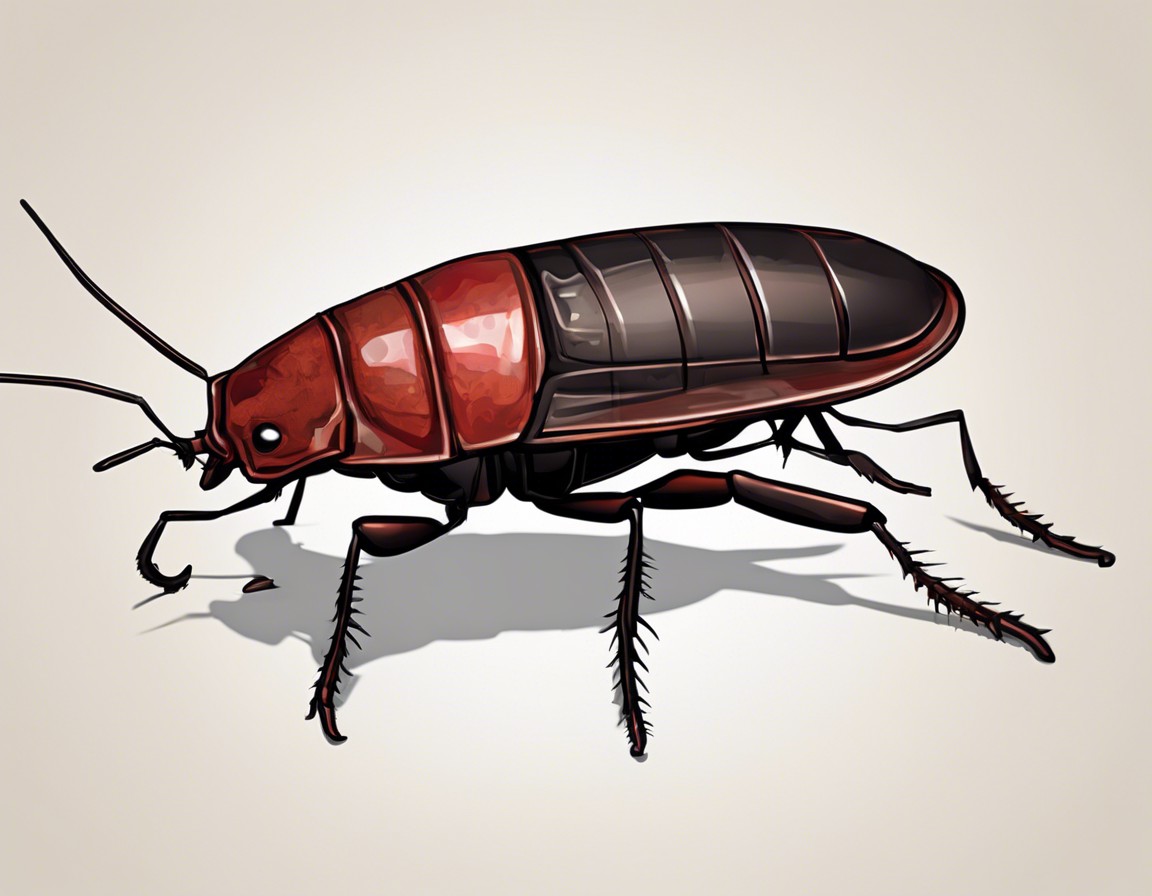Despite being relatively rare in Norway, the Oriental Cockroach presents a global problem. Famous for its resilience and adaptability, especially to cooler climates, this pest can often be found wreaking havoc in both residential and commercial settings. From damaging food supplies and materials to causing psychological stress, the impact of oriental cockroaches is far-reaching. By understanding their characteristics, habitats, and behaviours, we can effectively manage and control their spread. Let’s take a closer look at this pervasive pest.
- Distribution: They are widely prevalent globally and have adapted to diverse climatic conditions.
- Threats: They pose significant threats on human health and wellbeing, including potential disease transmission and instigating psychological stress.
- Recognising them: Identifying an Oriental Cockroach is crucial for effective eradication. Key features include their shininess, red to black-brown colour, and distinctive wing structure.
- Control measures: Preventive actions such as cleaning, sealing off cracks and temperature regulation can effectively control their proliferation.
Oriental Cockroach: A Global Presence
The oriental cockroach is a species that is prevalent all over the world. Despite their relative rarity in Norway, these pests were once a problem in some food businesses. This cockroach stands out with its medium size, reaching up to 2.5 cm in length, and distinctive red to brownish-black colour. The shiny body surface gives them a unique appearance, with males having wings shorter than their abdomen and females showcasing reduced wing stubs.
Adaptability to Cooler Climates
The oriental cockroach has a significant advantage over other tropical roach species – their superior tolerance for cooler environments. They thrive optimally at temperatures ranging from 20-25°C. This adaptability allows them to survive in varied climates.
Damage and Health Risks
Oriental cockroaches not only damage food items and materials but also produce an unpleasant smell. Their presence can cause psychological stress, particularly in case of large infestations. Moreover, they are potential carriers of various diseases as they reside in unhygienic environments and may spread viruses, bacteria, fungi, and parasites. Additionally, allergies to cockroaches can lead to asthma and skin irritations, posing health risks to humans.
Physical Traits of Oriental Cockroach
The oriental cockroach measures about 2.5 cm in length and exhibits a shiny body surface. Its colour ranges from red to black-brown. Male oriental cockroaches have wings that are shorter than their abdomen, whereas the females display reduced wing stubs.
Distribution of Oriental Cockroach
The oriental cockroach is a globally distributed species that has successfully adapted to diverse climatic conditions. In Norway, their presence is relatively rare, but they were previously a known issue in certain food businesses. Surprisingly, they are capable of surviving cooler temperatures compared to other tropical roach species.
Life Cycle of Oriental Cockroach
The life cycle of an oriental cockroach involves several stages. The journey begins with egg capsules laid in crevices, which hatch after about 60 days. This stage transitions into the nymph phase, lasting approximately a year and encompassing 7 to 10 nymph stages before reaching adulthood. The adult oriental cockroach can grow up to 2.5 cm in length and retains the shiny red to black-brown colour. Males exhibit wings shorter than their abdomen, while females possess reduced wing stubs.
Behaviour Patterns
Oriental cockroaches are omnivores that are especially active during the night. They prefer to inhabit humid, dark environments and tend to hide during the day. When exposed to light or threats, they are quick to retreat due to their photophobic nature.
Dissemination of Oriental Cockroach
The spread of oriental cockroaches generally occurs through human activities, such as the transport of food, clothing, and other items. Imported goods can be a source of infestation, particularly for food businesses and restaurants. However, natural spread in Norway is unlikely due to the country’s climate and the cockroach’s limited ability to survive outdoors.
Oriental Cockroach as a Pest: Damage, Health Risks, and Psychological Impact
As pests, oriental cockroaches can cause damage to food items by feeding on them and soiling them with droppings and foul-smelling secretions. They can also damage paintings, papers, books, and other materials. Moreover, they pose health risks as potential carriers of diseases and can trigger allergic reactions, varying from mild rashes to severe asthma attacks. Large infestations can induce psychological stress and anxiety among people.
Prevention and Control
Key prevention and control measures include cleaning up food residues, sealing cracks, and using sprays. It’s important to regulate temperature and humidity in order to hinder the proliferation of oriental cockroaches.
Oriental Cockroach FAQ
- Recognition: Medium-sized, red to black-brown, shiny. Males have wings shorter than their abdomen, females have reduced wing stubs.
- Spread in Norway: Unable to survive outdoors, spread occurs through imported goods and luggage.
- Potential Damage: Damage to food items and materials, unpleasant smell. Also leads to health issues and psychological stress.



